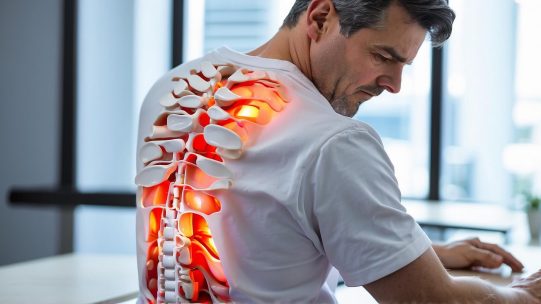A guide to pain relief after knee replacement surgery

Getting a new knee or hip is life-changing, but first you have to overcome the post-surgery recovery.
Experts say that a combination of the right medications and other tips can make the recovery easier.
A useful mnemonic (memory aid) in this case is the term RICE. This is an acronym for Rest, Ice, Compression, and Elevation.
According to the American Society of Hip and Knee Surgeons, it is important to rest after surgery. Keep a journal, listen to music, and try other relaxation techniques if it is difficult to rest the leg.
To reduce swelling at the surgical site, apply an ice pack for 20 to 30 minutes at a time, rest for 30 minutes, and then apply it again. Ice packs and coolants should not be applied directly to the skin, but should be buffered with a towel or flexible wrap to prevent frostbite.
Knee sleeves and compression wraps are also helpful, surgeons advise. Compression reduces swelling but should be done gently. If the leg is numb or cold to the touch, it is wrapped too tightly, according to a news release from the association.
Elevation is defined as lying down and placing the feet on a pillow or soft object. The feet should be above the level of the heart.
Experts say that posture also makes a difference. Patients are less distressed if they believe the pain is manageable.
Numerous non-opioid medications are useful without the risk of addiction. Commonly used medications after joint replacement surgery include nonsteroidal anti-inflammatory drugs (NSAIDs), acetaminophen, muscle relaxants, and medications for nerve pain.
For nonsteroidal anti-inflammatory drugs (NSAIDs), surgeons can provide guidance on their use for both prescription and over-the-counter medications. Prescription medications include meloxicam (Mobic), voltaren (diclofenac), indomethacin (Indocin), and celecoxib (Celebrex). Over-the-counter medications include ibuprofen and naproxen (Advil, Motrin, Aleve, etc.). Aspirin may be used to decrease the risk of blood clotting.
Acetaminophen (Tylenol) is another effective over-the-counter analgesic and antipyretic that can be used with NSAIDs and other analgesics. The combination of acetaminophen and nonsteroidal anti-inflammatory drugs (NSAIDs) can reduce pain more effectively than either drug alone.
Muscle relaxants may reduce pain associated with muscle spasms. Common muscle relaxants include methocarbamol (Robaxin) and cyclobenzaprine (Flexeril).
Neuro analgesics are also effective. Gabapentin (Neurontin) and pregabalin (Lyrica) are effective for nerve pain and can reduce the amount of opioids needed after joint replacement surgery.
During the first few weeks after joint replacement surgery, your surgeon may prescribe opioids. Opioids are commonly used before and after physical therapy and to relieve pain while sleeping.
There are a variety of opioid medications available, varying in strength. They include tramadol (Ultram), hydrocodone (Vicodin), and oxycodone (Roxicodone, Percocet).
These opioid drugs are highly addictive because of their ability to activate the “reward center” in the brain. In addition, regular use of opioids leads to the development of tolerance to their analgesic effects and the need for higher doses for pain relief.
Surgeons advise against long-term use of opioids, whether before or after joint replacement surgery.
If opioids are used in combination with multiple types of medications for severe postoperative pain for a short period of time, it is unlikely to lead to abuse or addiction. Disposal of all unused pills at an approved disposal site will help prevent misuse.










Comment